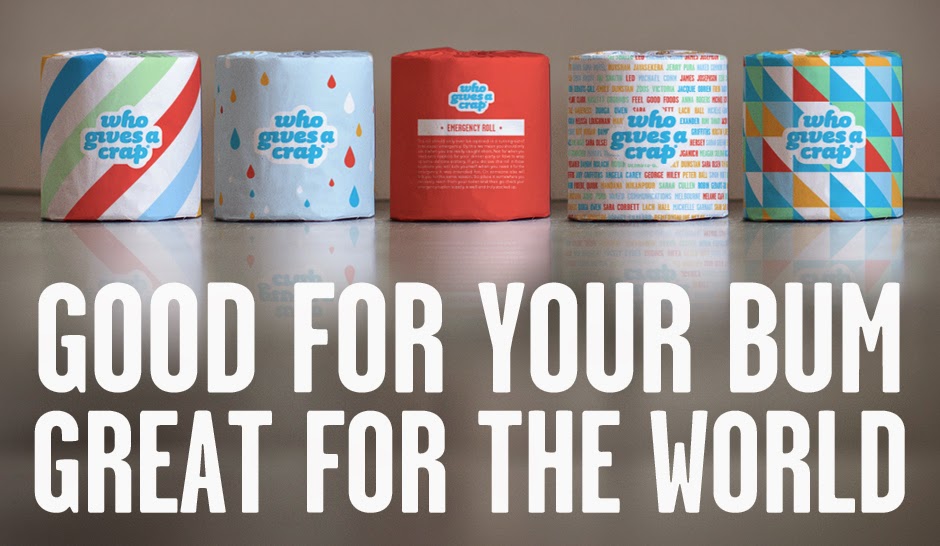It’s something you use every day, hopefully. When you wake
up you’ll use it. After drinking or eating you’ll use it, and right before you
go to bed you’re going to want to use it.
What am I talking about? You guessed it, or maybe you didn’t but I’m talking about toilet paper. If you think about it, we use it daily and on a very regular basis.
Until a couple of years ago I never really took an interest in the kind of toilet paper I was using. I’m sure Mum just got the cheapest one available because in a family of 6 we went through a lot of toilet paper. But that’s the thing, everyone goes through a lot of toilet paper. It’s just the way our bodies function. We use the bathroom and we use toilet paper. Well that’s what I do in the toilet anyway, I’m not sure about you!
What do you reckon would happen if the toilet paper people used was not from a sustainable or recycled source?
Guess what? It’s not good news. Worldwide, the equivalent of almost 270,000 trees is either flushed or dumped in landfills every day and roughly 10 percent of that total is attributable to toilet paper. That’s every day!!
So we’re talking about 27,000 perfectly lovely trees literally going straight down the toilet bowl and into landfill. That’s obviously not good for the environment, nor is it good for the carbon dioxide floating around in our atmosphere. Trees breathe in carbon dioxide and give us nice fresh oxygen to breathe. Thank you trees, we love you.
But according to the Australian Conservation Foundation, only 5% of the toilet paper we flush away in Australia is made from recycled paper. Only 5%, you’ve got to be joking!! The rest is thought to be from plantations or native-forest trees.
Thankfully using recycled paper can help. Every tonne of paper recycled saves 13 trees, 2.5 barrels of oil, 4100 kilowatts of electricity, four cubic metres of landfill and 31,380 litres of water. Boom, go recycled paper, you’re the best. So what can you do?
Now that you’ve realised maybe your toilet paper isn’t the most sustainable option around, you’re probably thinking, which one should I get? Just as we discovered with tuna, packaging and labelling can be very misleading, so friends you’ve got to read before you buy!
What’s the best kind of toilet paper?
Personally I buy toilet paper that is 100% recycled paper and is owned and made in Australia. There’s a couple of brands that fit the bill. Lucky for us, the guys at Shop Ethical have done the hard work for us and have figured out the good and the bad brands.
Up the top is Earthwise, a brand from Encore Tissue. They use 100% post-consumer recycled waste paper. This means that the materials used in this toilet paper are onto their second life! Yay!
Some of their packaging is also recycled paper which is even better! Usually Earthwise is used in workplaces and businesses. Check out what your workplace uses. See if they can change to recycled toilet paper! Next up is Safe toilet paper which is also owned by Encore Tissue and has the Planet Ark seal of approval.
The one that I’ve been able to find at my nearest Coles is Naturale toilet paper, which is made by ABC Tissue. It’s 100% recycled, made from used office paper. They’ve even told us how they’re helping the Daintree Rainforest in Queensland on the back. It’s also got little frogs on the toilet paper to make you feel happy when you go to the bathroom.
 |
| Naturale toilet paper |
The main reason my friends tell me to buy it is because Who Gives A Crap gives 50% of their profits to WaterAid to build toilets and improve sanitation in developing countries. They say that 40% of the world’s population don’t have access to a toilet and by building them, they’re helping to stop potentially deadly diseases like diarrhoea. This is great news and such a unique idea. You’re not only buying toilet paper that’s 100% post-consumer (remember the second life!) recycled waste, but you’re helping the lives of people who are in need of it.
 |
| Who Gives A Crap? |
The only downfall is the cost. In comparison to other sustainable papers, you’re going to pay about 3 times more. We’re hoping that most of this extra cost goes straight into building toilets for people that need them! But if you’re willing to fork out a bit extra for a very worthy cause, then Who Gives A Crap is definitely your bathroom buddy!
Things to remember when buying toilet paper:
- Always read the labelling. Although the packaging looks super green and sustainable it might not be.
- Read the back, find out if it’s 100% recycled and whether it’s been imported. Less carbon miles the better!
- Don’t be fooled if it says ‘made from 100% renewable sources’. Anything that grows out of the ground is technically a renewable source. But we don’t really need to get it out of the ground, do we?
 |
| Recycled toilet paper! |



